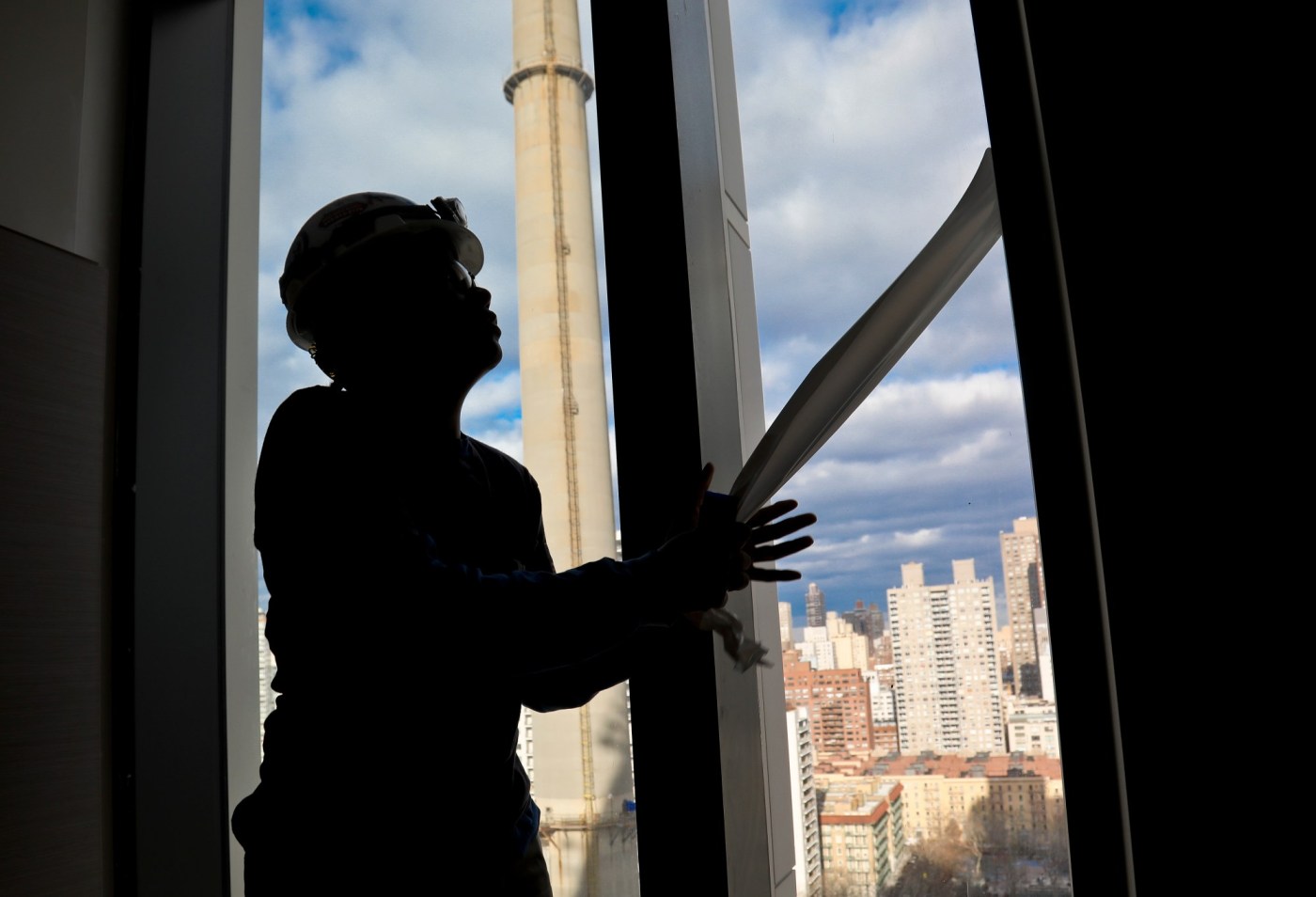
What’s behind the widening gender wage gap in the US?
By ALEXANDRA OLSON and CLAIRE SAVAGE AP Business Writers
NEW YORK (AP) — Just how much of a setback was the COVID-19 pandemic for U.S. working women?
Although women who lost or left their jobs at the height of the crisis have largely returned to the workforce, a recent finding points to the price many paid for stepping back: In 2023, the gender wage gap between men and women working full-time widened year-over-year for the first time in 20 years, according to an annual report from the U.S. Census Bureau.
Women working full time earned 83 cents on the dollar compared to men in 2023, down from a historic high of 84 cents in 2022. The Census Bureau called it the first statistically significant widening of the ratio since 2003.
That’s a reversal from the previous five years when the ratio had been narrowing — a trend that may have partly been driven by average median earnings for women rising because so many low-wage women had been pushed out of full-time jobs.
Economists trying to make sense of the data say it captures a complicated moment during the disjointed post-pandemic labor market recovery when many women finally returned to work full-time, especially in hard-hit low-wage industries where they are overrepresented like hospitality, social work and caretaking.
The news is not all bad: Wages rose for all workers last year, but faster for men. And while the gender wage gap rose, it’s on par with what it was in 2019 before the pandemic hit.
S.J. Glynn, the Labor Department’s chief economist, said it’s too soon to tell whether 2023 was a blip or the start of a worrisome new trend for the gender wage gap. But she said that even a reversion to the pre-pandemic status quo is a reminder of how far behind women were in the first place, and shows how the pandemic slowed the march toward gender equity.
Related Articles
Simu Liu asks fans to stop ‘bullying’ bubble tea brand amid ‘cultural appropriation’ stir
Trump’s economic plans would worsen inflation, experts say
Why you shouldn’t store your money in payment apps
Walgreens to close 1,200 stores as US pharmacies struggle to define a new role
What Trump and Harris have in store for your taxes
A surge of Latinas into the workforce had an impact
Hispanic women in particular illustrate the complexities of this moment. They were the only demographic group of women overall whose wage gap narrowed marginally between 2022 and 2023 in comparison to white men working full time, according to Census Bureau data analyzed by both the National Women’s Law Center and the National Partnership for Women and Families, research and advocacy groups. For Black women and Asian women, the wage gap widened, and for white women, it stayed the same.
Despite their wages rising slightly faster than for other women, however, Latinas remain among the lowest paid workers — with median full-time earnings of $43,880, compared with $50,470 for Black women, $60,450 for white women and $75,950 for white men. Consequently, their rapid entry into the full-time workforce in 2023 helped slow down median wage gains for women overall, likely contributing to the widening of the gender wage that year, according to Liana Fox, assistant division chief in the Social, Economic and Housing Statistics Division at the Census Bureau.
Latinas have increasingly become a driving force of the U.S. economy as they enter the workforce at a faster pace than non-Hispanic people. Between 2022 and 2023, the number of Latinas working full time surged by 5% while the overall number of full-time female workers stayed the same.
Ariane Hegewisch, program director of employment and earnings at the Institute for Women’s Policy Research, said the slight narrowing of the wage gap for Latinas may be because their presence in top earning occupations grew from 13.5% to 14.2% last year, according to an IWPR analysis of federal labor data.
However, the portion of Latinas in full-time low-wage jobs also grew in 2023, she added.
The recovery is leaving behind part-time Latina workers
Latina workers were among the hardest hit by the pandemic, suffering the highest unemployment rate at 20.1% in April 2020 of any major demographic group, according to a Labor Department report that examined the pandemic’s disproportionate toll on women.
Domestic workers, who are disproportionately immigrant women, especially felt the effects. Many lost their jobs, including Ingrid Vaca, a Hispanic home care worker for older adults in Falls Church, Virginia.
Related Articles
NASA orders up more SpaceX flights, tables Boeing’s Starliner until at least late 2025
Tom Brady’s purchase of a minority stake in the Las Vegas Raiders is approved by NFL team owners
Massport axes Logan Express management firm after investigation reveals employee theft
Salem is the latest Massachusetts city to launch guaranteed income program: $500 a month to 100 residents
US fines Lufthansa $4 million for treatment of Orthodox Jewish passengers on a 2022 flight
Vaca, who is from La Paz, Bolivia, contracted COVID-19 several times and was hospitalized for a week in 2020 because she was having trouble breathing. She continued to test positive even when she recovered, so was unable to enter families’ homes or work for most of that year or the next.
She had no money for food or rent. “It was very hard,” she said, describing how she lost clients during her time away and is still struggling to find full-time, stable work.
The Census Bureau calculates the gender wage gap by comparing only men and women who work year-round in full-time jobs. But a grimmer picture for women emerges from data that includes part-time workers, said Jocelyn Frye, president of the National Partnership for Women & Families.
Latinas, for instance, are only paid 51 cents for every dollar paid to white men by this measure, and their gender wage gap widened from 52 cents on the dollar in 2022 according to the organization’s report, which analyzed Census Bureau microdata.
Matthew Fienup, executive director of California Lutheran University’s Center for Economic Research & Forecasting, said he expects the gains in Latina wages, educational attainment and contributions to the U.S. GDP “to continue for the foreseeable future.” For women overall, he noted that the gender wage gap has steadily narrowed since 1981 despite occasionally widening from one-year-to the next.
“It’s important not to put too much emphasis on a single year’s data point,” he added.
Political divisions have hampered policy solutions
Still, the pace of progress has been slow and seen periods of stagnation.
The U.S. will continue to have a gender pay gap until the country addresses the structural problems that are causing it, according to Seher Khawaja, director of Economic Justice at national women’s civil rights organization Legal Momentum.
“There are a few underlying problems that we’re really not correcting,” Khawaja said.
For example, the current economy relies heavily on women doing unpaid or underpaid care work for children and older adults. “Until we come to terms with the fact that we need to give care work the value that it deserves, women are going to continue to be left behind,” Khawaja said.
While many Democrats and Republican agree on the structural challenges facing women in the workforce, they have struggled to find common ground on policy solutions, including expanding paid family leave and offering protection for pregnant workers.
An ongoing battle centers around the Democratic-sponsored Paycheck Fairness Act, which would update the Equal Pay Act of 1963, including by protecting workers from retaliation for discussing their pay, a practice advocates say helps keeps workers in the dark about wage discrimination.
Republicans have generally opposed the bill as redundant and conducive to frivolous lawsuits. Vice President Kamala Harris, however, reiterated her support for Democratic-sponsored bill on Monday following the death of one of its most prominent supporters, the equal pay icon Lilly Ledbetter.
Pay inequity, meanwhile has ripple effects, Khawaja explained: “It’s not only women who suffer. It is their families, their children who are suffering from the lack of adequate income and compensation. And this is driving intergenerational cycles of poverty and insecurity.”
The Associated Press’ women in the workforce and state government coverage receives financial support from Pivotal Ventures. AP is solely responsible for all content. Find AP’s standards for working with philanthropies, a list of supporters and funded coverage areas at AP.org.


